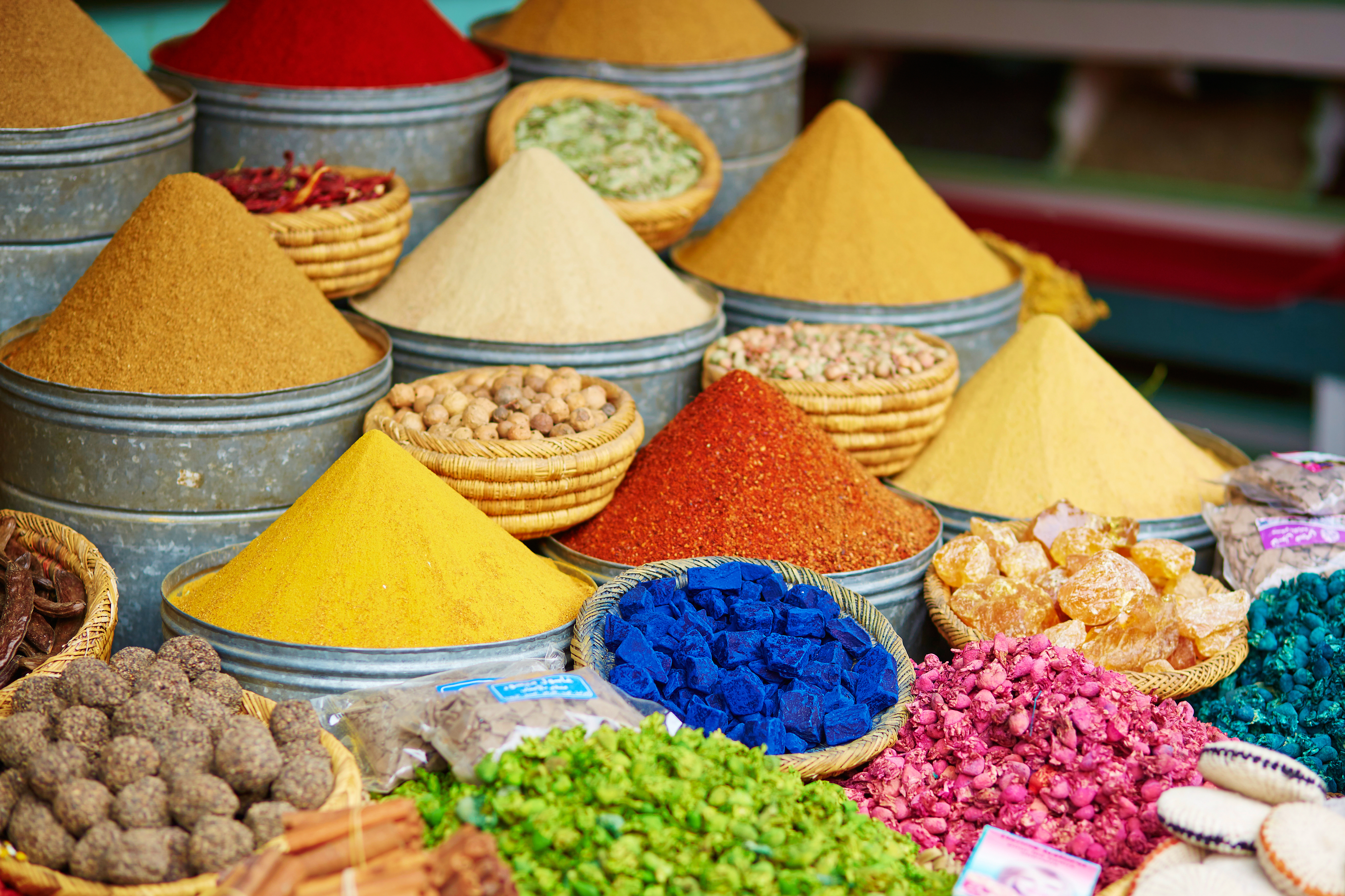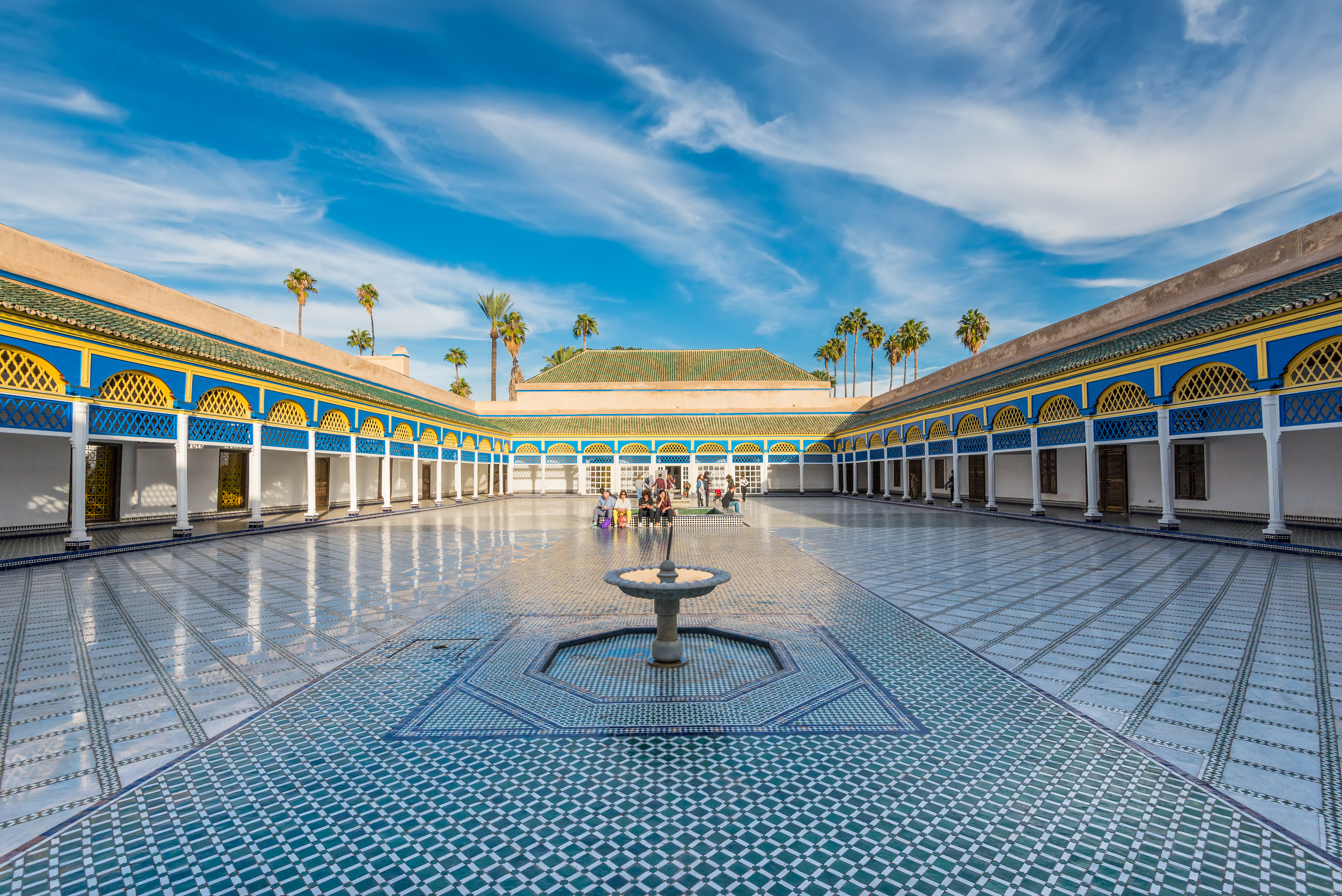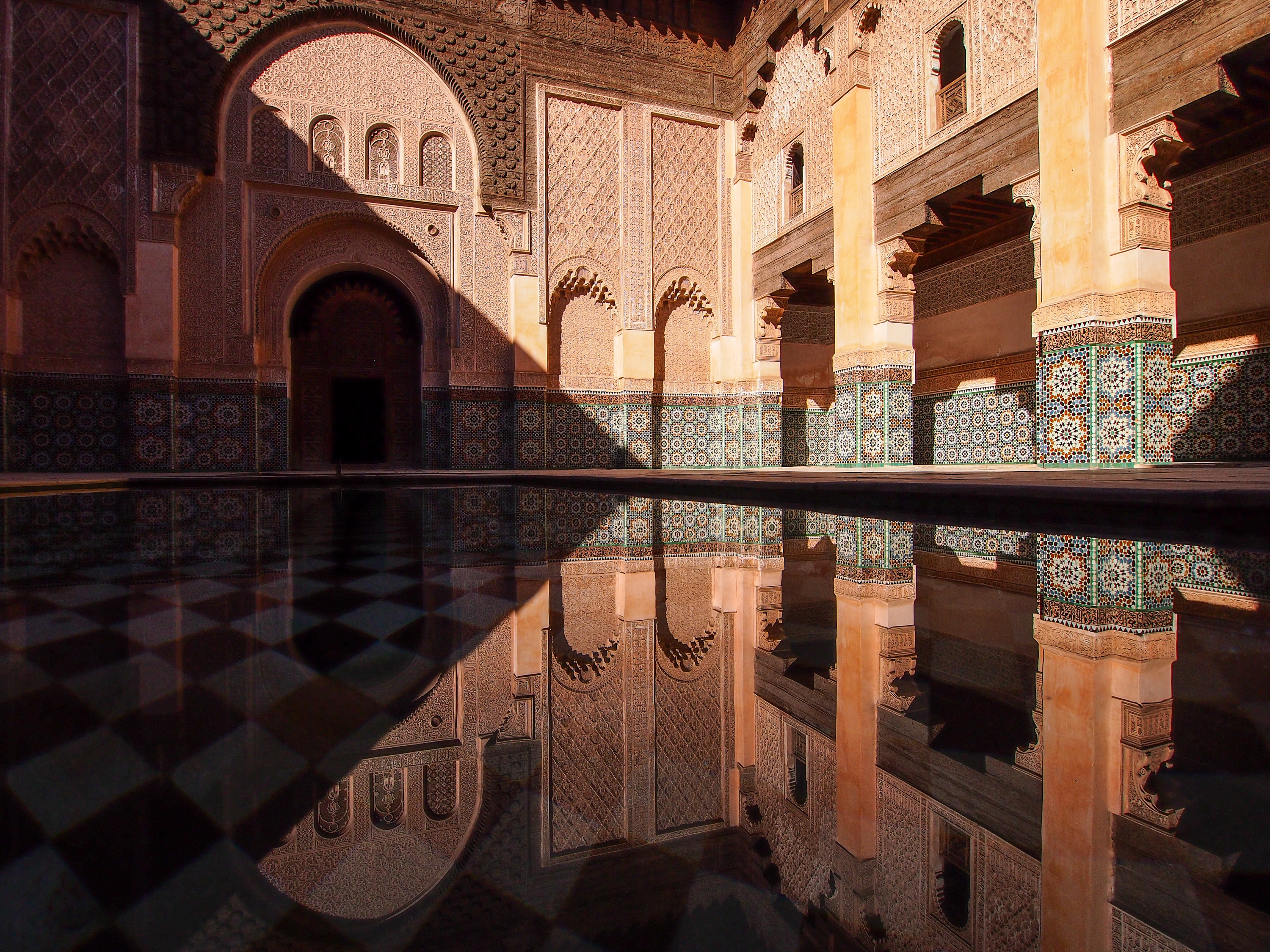Morocco is a fascinating country with a variety of different terrain spanning from the desert to rugged mountains, yet no trip is complete with a visit to the captivating capital city of Marrakech. Culturally rich with its market squares, intricate mosques, stunning palaces and tranquil gardens, there are plenty of things to keep you busy. And yet, it may feel like you’ve wandered through a time machine as Marrakech boasts a medieval versus modern appearance.
If you think it sounds overwhelming then you’re not wrong, Marrakech certainly has the hustle and bustle you can imagine. But because Marrakech is Marrakech, it wouldn’t be as alluring without its chaotic charm. As a result of that, there are many things to do and see in ‘The Red City’.
Jemaa el-Fna
There is no doubt that the pulse, heart and soul of Marrakech are at the lively Jemaa el-Fna square. During the relentless heat of the day, it’s quite common to be bewildered. Local street hawkers will test your haggling skills that are all part of the friendly chaos. Don’t be surprised to come across snake charmers, Berber dancers amongst other obscure entertainers. The soundtrack will come from Koutoubia Mosque as it bellows out prays five times a day. To take a break, head over to one of the surrounding rooftops for some mint tea, with Hotel CTM seemingly relaxed about letting non-guests enter.
At night, Jemaa el-Fna does not slow down. An open-aired food court comes alive selling everything from sheep’s heads to freshly squeezed juice stalls. Don’t mind the sharp tongues of the food sellers; it’s all part of the experience. If you do want to peruse freely, keep moving before the local hawkers spot you!
Saadian Tombs
Located just out of the centre of the city, the Saadian Tombs are beautifully preserved ideal for visitors to appreciate. The tombs were created for the resting places for over sixty members of the Saadi dynasty and by the looks of it, no expense was spared. The decorations as you can come to expect in Morocco are immaculate and despite tombs normally evoke an eerie atmosphere, the mood here is quite light. If you’re a history fanatic then you’ll have to make room for a visit here.
Koutoubia Mosque
Wandering around the Jemaa el-Fna the most notable structure you’ll see will no doubt be the Koutoubia Mosque. At over 70-metres high it is the largest mosque in Marrakech. Dating back to the 12th century, once you’ve caught a glimpse of Koutoubia it’s impossible not to move in for a closer inspection. Decorated with a typical Moorish ornamental prowess such as characteristic arches and ceramic strips the impressive detail will not go unnoticed. You’ll really get a sense of Moroccan culture when the call to prayer echoes out from the top of the minaret, while at the base of the mosque you can wander the laid back gardens from 8 am till 8 pm daily.
*Non-Muslims are permitted to enter inside the Koutoubia Mosque itself.
Tanneries
The Tanneries are fascinating and cannot be missed within the medina of Marrakech. You can witness local’s hand dye materials for preparation to trade within the city in what is essentially an open-aired factory. From first glance, you’d almost think the buckets of dye were a giant-sized palette of colours for an artist, which makes it visually appealing to visitors.
Jardin Majorelle
Another one of Marrakech’s most popular attractions, Jardin Majorelle is a cobalt coloured oasis in the heart of the city. Created over forty years by Jacques Majorelle, a French artist, Jardin Majorelle is a nice contrast to the typical traits of Marrakech. With exotic plants and water features coupled with the gardens specific artistic design, whether you’re an art enthusiast or not, it’s not difficult to appreciate this creative masterpiece.
Old Medina Souks
One of the best things you can do is go head first into Marrakech’s Old Medina Souks (Old Town Markets). With an array of rich colours, smells and noises, getting lost in the souks is not uncommon, so make sure you have a map to hand. Make sure you visit the Souks that typify Morocco such as woven carpets, intricate ceramic ornaments and traditional spices. If you’re with family or in a group just stick close together, keep your belongings close and trust your instincts. Generally, everything is in a friendly manner and part of the culture here.
Eat Tagine
If Marrakech is your first, last or only stop there’s always an excuse to try some of Morocco’s most famous cuisine, Tagine. Slowly cooked under a typical Tagine earthenware pot, Tagine is a stew normally consisting of meat or fish, in addition to vegetables, dried fruits and spices such as ginger, cumin and saffron. Wherever you decide to grab a bite to eat in Marrakech, you’ll find Tagine.
Palais Bahia
Palais Bahia translates to ‘the palace of brilliance’ and is a major jewel within the countries rich cultural heritage. Created back in the 19th century the palace now hosts concerts and art exhibitions. Take a stroll around the rooms decorated with painted ceilings, wooden doors and tiled courtyards. Yet it will be in the back courtyard you’ll admire the most, in its original spacious and iconic state.
Berber Museum and Yves Saint Lauren Museum
The late fashion designer Yves Saint Lauren and co-founder Pierre Berge of the fashion brand decided to preserve Jardin Majorelle. Then, they added to it. Berber culture is deeply entrenched in Morocco’s roots, something that is appreciated by the world’s first Berber Museum. Here you can see traditional raw materials, ritualistic artefacts, historic Berber jewels and a selection of grand costumes.
The Yves Saint Laurent Museum recently opened in October 2017 and is entirely devoted to the late iconic fashion designer. Here you can enjoy exhibitions on his work, an exhibit hall, a library, galleries, restaurants and more. It was here in Marrakech that the fashion legend fell in love with and inspired his timeless styles and work.
Ben Youssef Madrasa
Once dedicated to the teaching of Islamic law, Ben Youssef was once the largest of it’s kind in Northern Africa. Madrasa means schools, and Ben Youssef is still remarkably preserved to give you an insight into the educational past of Morocco. Another important structure that represents Morocco’s heritage dating back to the 14th century, if you’re a cultural cat it’s difficult not to marvel at this medieval masterpiece.
Final Tip:
Stay in a traditional Riad, a traditional Moroccan house that includes an inside garden or courtyard. Your budget will ultimately determine which one you stay in we can recommend Riad Nesma and Riad l’Orangeraie.
- Search Flight + Hotel
- Search Hotels
- Search Flights
- Search Car Hire




















